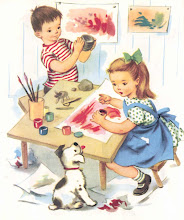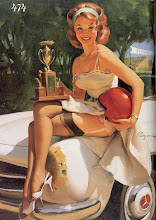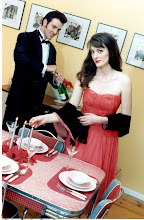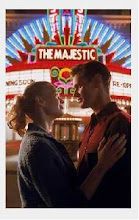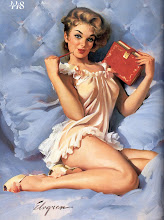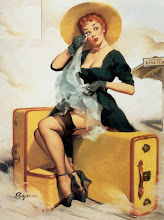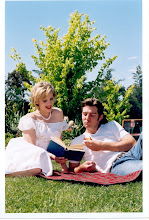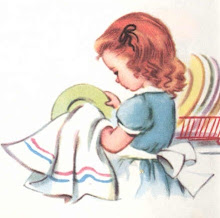
The good old days … (from left) vintage enthusiasts Candice De Ville, Christopher Horne and Nicole Jenkins, with model Nina (far right), who wears 1920s clothing from Horne's collection.
Photo: Mike Baker
As the glory days of their preferred sartorial eras fade into the past, vintage fashionistas go to great lengths to keep their best threads close. Lee Tulloch meets five collectors fanatical about other people's clothes.
The mood in the room was one of barely contained excitement when fashion designer Lisa Ho auctioned her extensive collection of vintage clothing in Sydney in August. Not only was this one of the most significant vintage-fashion collections to be sold off in recent years, there were no reserves. Unexpectedly, the hammer was falling on prices that the experts considered way below market value. Beaded 1920s flapper dresses that would each usually fetch thousands were bundled off at five for $1000. Six floral silk chiffon 1930s dresses sold for $500 the lot; an exquisite black 1920s coat with satin petals went for a mere $80. The quality of workmanship evident could be matched these days only by a few Paris couture houses, where hand-stitched dresses would probably cost you upwards of $30,000.
Speculation was rife as to why the clothes went so cheaply; certainly, it went against trend. Given the buzz of anticipation for Baz Luhrmann's
The Great Gatsby and the popularity of TV series such as
Downton Abbey, the desire to dress in fetching flapper-style à la Daisy Buchanan or Lady Mary Crawley has never been more fashionable.

Flower power … DJ Emma Peel’s favoured vintage era is 1968-71. “For me, dressing is like daily art, where you’re the blank canvas,” she says.
And yet for a small number of private collectors, the thrill is simply to
possess the object, even if they send themselves broke in the pursuit, or even if the item they buy is too small or too fragile to wear. What exactly is this mania for collecting "dead people's clothing", as one enthusiast calls it? Is it about nostalgia for another era? A unique means of self-expression? Ownership of something that no one else can possess? A harmless hobby or private insanity? For some dedicated collectors, it's all of the above.
The blogger
At 12, Candice De Ville was dressing like Joan Crawford, in wide-shouldered peplum suits with her dark hair worn in a 1940s victory roll. "I looked like a strange bobble-headed doll, but I loved it." Growing up in "very white-bread, very conservative" suburban Melbourne, her only platform for showing off her outfits was church on Sundays. The red woollen full-length cape with black fur trim "didn't go down very well", she recalls. "I was the weird kid who wore dead people's clothes."
The cinema classics presented by Bill Collins on his
Golden Years of Hollywood program were an influence on her style, as was her paternal grandmother, who had saved most of her clothes from the 1930s and '40s and handed them down to her eager granddaughter. "To suddenly be able to step into this world that I loved so much on film by putting on these clothes was amazing," says De Ville. "I realised there was this incredible power through clothes to connect to the past and the people who'd lived there."

All that jazz … author and 1920s vintage-clothing collector Inger Sheil, wearing a 1920s gold lamé coat and headdress and reproduction shoes.
Photo: Natalie Boog
While still at school, she began to volunteer at retirement homes because she loved talking to the old ladies about how they'd styled their hair and make-up. Armed with tricks from the past, she'd practise on her girlfriends, which led to a hobby doing vintage hair and make-up while she worked different corporate jobs in marketing and advertising. Every day, she dressed herself up to the nines in custom-made outfits based on her vintage pieces.
Ten years ago, De Ville found herself back in Melbourne's outer suburbs, husband and two small daughters in tow. Never venturing out of the house without being impeccably dressed in vintage - including hair, makeup, corset, stockings and garters - she would meet with one of two reactions from the other mothers at her daughters' school: "I love your hair and make-up. I wish I could do that," or the opposite: "Why on earth do you dress like that? Do you do it to make me feel bad?" She says, "The perception is the only people who'd want to dress like this are the very self-absorbed or people with a lot of money or time on their hands." In face of such unexpected hostility, De Ville started to write a blog, Super Kawaii Mama ("kawaii" meaning "cute" or "make you smile" in Japanese).
"My mission was to inspire people to step outside their comfort zone and explore vintage," she explains. "If the average person only does painting-by-numbers fashion, it limits their opportunity for self-expression. How do you shop for vintage, care for it, launder it and restore it? How do you look after it so it retains its value?"
Her blog garners more than 50,000 unique viewers each month, she says, and has introduced her to a worldwide community of "vintagomaniacs". She regularly travels overseas to speak at blogging events and nostalgia festivals, works with private clients (such as rock bands and actors) to teach them how to carry off the look of another era, styles weddings and parties, and loans out her collection for film and fashion shoots.
Her five-bedroom home is about to undergo a renovation because, as spacious as it is, the clothes have taken over. Her daughters share a bedroom to make room for their mother's collection, which occupies three of the five bedrooms.
What kind of financial investment has she made? "That's the scary part. I still don't have the final figure. I will get there when I start cataloguing it all. A commercial value on the whole collection would probably be $70,000-$80,000." Luckily, she adds, "I have very good shopping karma."
Her vigilance regarding the care of her collection borders on the fanatical. "Whenever I bring anything into the house for the first time, I put it in a ziplock bag and leave it in the freezer for a month. That kills any creatures. Every six months, everything is completely removed from each wardrobe and the wardrobe is scrubbed down and surface-sprayed."
She sometimes hunts for clothes "in dodgy places", wearing gloves, overalls and a dust mask. "You just get this compulsion to rescue," she says.
The guardian
In 1994, a member of a prominent Melbourne family telephoned fashion-parade director and compere Christopher Horne and offered him a collection of garments dating back to the Victorian era. "They said, 'We're moving house and we've found masses of clothing. There are hats, there are gloves, there are even shoes.' I said, 'Don't you touch anything!'" When he arrived at the house, Horne was astonished to discover "hundreds and hundreds" of pieces dating from the 1880s, all of them carefully wrapped and packed for more than a century. "It was a very exciting moment. It wasn't just about the clothing: it was also about the people who'd worn them."
Over the years, he has had many an occasion to question the wisdom of accepting such a generous gift. "Hell! What did you start, Chris?" he asks himself, contemplating the two racks of gowns, all neatly zipped in calico bags, that he has wheeled into his dining room to show me. "The greatest problem is, where do you put everything?" A tour of his South Yarra villa reveals wardrobes piled high with large hatboxes and a room with hanging spaces so crammed with frocks vying for space that they almost look animated.
A favourite outfit is a black top and skirt from the early 1900s, when everyone in the British Empire dressed in mourning for Queen Victoria. Another is a chocolate-brown 1920s opera coat with a green silk lining. In stark contrast, there's a minidress modelled on one that Jean Shrimpton wore to the Melbourne Cup in 1965.
So what does a gentleman of a certain age do with hundreds of vintage gowns? "It's almost like a time capsule," he says. "I didn't want to pack it all away in acid-free paper and bring it out on Holy Days, as so many people do. I thought, at some point, that it would make the most beautiful fashion show."
He named the collection "Memories of Melbourne" and, on several occasions, selections from it have been presented, worn by tiny-waisted models, at charity fundraisers and fashion events. "The dresses need to go out for a walk every now and again!" he says. "I show them in chronological order. I'm pretty methodical about what gloves go with what. The outfits must be authentic."
The upside, he says, is the pleasure the collections give the audiences. "Some women bring their daughters and their granddaughters to the parades. The joy of the parades, for me, is watching them enjoy the clothes."
The forensic seamstress
"Vintage has one big plus in that it's unique," says Nicole Jenkins, whose Melbourne boutique, Circa Vintage, is the largest vintage clothing shop in Australia. "You're never going to walk into a party and see your best friend wearing the same dress." The former IBM software designer, cinema art director and one-time tour guide in a Scottish castle is one of the vintage scene's most recognisable figures with her two-tone Candy Apple and Atomic Pink hair and cat's-eye glasses. She has also published one of the most definitive books on the subject,
Love Vintage. "I consider myself a bit of a forensic seamstress," she says. "I like to look at old clothes and uncover their layers. They tell you so much about the women who wore them and the lives they led."
Jenkins estimates she owns more than 10,000 pieces of vintage clothing collected over 32 years, much of it in storage awaiting repair. She buys from private dealers mostly - sometimes a thousand pieces at a time. She loves discovering the provenance of clothing and has a penchant for clothes manufactured in Melbourne's Flinders Lane at a time when the Australian fashion industry was thriving.
Jenkins now wears vintage "all the time, every day" and has even convinced her husband, who works in IT, to wear op-shop finds to the office. "I think I must be the most obsessive [collector] of all," she laughs. "I've dedicated my life to it." While she's made a reputable business out of her passion, it's still less about financial reward and more about the thrill of the find.
Jenkins grew up in a Victorian mansion in Sydney's Turramurra, above her mother's antique shop. "Even when I was three, my favourite dress was a 1930s number I wouldn't take off for six weeks." The family drove around in a 1920s Studebaker her father had bought for £60 to celebrate her birth. Her first vintage purchase, as a 15-year-old, was a 1950s polka-dot dress that cost her $8. It was, she says, love at first sight. From then on, she spent all her spare time scouring op shops. "I never had a boyfriend who understood, but [wearing vintage] is about expressing who you are even if you don't fit in with the social group. The clothes make me happy."
While the general definition of vintage is that it has to be at least 20 years old, Jenkins draws the line at 1965. "Fashion ended when women stopped putting on hats and gloves when they left the house. People have gone from viewing fashion as something you update each season and hand down to your daughter to something you wear and throw away. Our grandmothers had a small wardrobe of fairly plain dresses that they would zhoosh up with accessories." And repair.
So what styles are the most collectable right now? Simple 1950s printed housewife dresses, the ones with deep pockets for pegs, are fetching upwards of $250, she says. "I can't get enough of them." But the real secret to collecting, she says, is "to want what other people don't. When something is so out of fashion it looks horrendous, that's when you should buy it, because it's about to come back in."
The obsessive
"There's this amazingly intense thrill I get from seeing something so beautiful," explains Inger Sheil, whose passion is 1920s beaded dresses. "
I have to have that dress!" Sheil currently has more than 80 vintage frocks, and then there are the coats, the hats, the lingerie, the gloves and the jewellery that go with them. The least fragile of these dresses she does occasionally wear; the rest fill the wardrobes of her compact Sydney apartment, and spill over into a whole room at her parents' northern beaches home.
She has invited me to her apartment to watch her unpack the seven dresses and one coat she bought at the Lisa Ho auction. She fingers the intricate beadwork of a French cotton chemise: "This is a brilliant deal!" The hammer price was less than $200, but such dresses in mint condition might fetch anything from $2000-$4000 each on the international market.
Sheil's obsession with beautiful fabrics and delicate stitching - hallmarks of the era - means she doesn't limit herself to buying garments that are in perfect condition. Often she'll swoop on a dress or coat that's missing beads or is so fragile its stitches barely hold together. She calls these garments her "glorious ruins" and admits she really should stop collecting them. "I've got dresses where I think, 'Why did I buy this?' But someone's got to save them." Luckily, her mother, Sandra, is a talented seamstress.
The first task with any new purchase is to oversew under the arms to strengthen them. Even then, there's a risk attached to wearing something so frail. One year, at the annual Art Deco Festival in Napier, New Zealand, where fellow 1920s and '30s collectors gather to promenade in their finest outfits, the dress Sheil was wearing started popping its seams - not an uncommon event, apparently. "We wear so many undergarments it doesn't matter, anyway," she laughs.
In a roundabout way, it was the Titanic that led Sheil to start collecting vintage clothing. After being riveted by documentaries about shipwrecks as a child, she developed a fascination for maritime history. In particular, she was intrigued by the heroism of the fifth officer of the Titanic, Harold Lowe, and eventually turned years of research on him into a book,
Titanic Valour: The Life of Fifth Officer Harold Lowe, which was published earlier this year.
During the course of this research, she met fashion historian Randy Bigham, who loaned her a few dresses by Lady Lucile Duff Gordon, the British couturière who controversially escaped the sinking ship in an under-manned lifeboat. "Until that stage I hadn't thought about the gowns still being extant," Sheil recalls.
A grandmother who told her stories about growing up in the '20s was another influence.
"It was an age caught between the First World War and the Depression," Sheil says. "There's an amazing poignancy to it. There's this incredible blaze of colour and light, like a bomb exploding."
Sheil gives many of her dresses nicknames, such as "Drinky Winky" and the "Sunshine" and "Venus" dresses. "There's a whole social history that goes with them," she says. Her favourite piece in her collection is "Shaky Shaky", a black beaded French chemise that throws off peacock colours.
After listening to Sheil talk about scouring Etsy and eBay for treasures and the relationships she's forged with high-end dealers and auction houses internationally, I have to ask her whether her obsession is likely to send her broke. "It does consume a lot of money," she admits, "but dealers are so accommodating - they accept lay-by."
The girl bomb
You couldn't accuse emma peel of being indiscriminate. The fashion era she favours is, specifically, 1968-71. Why these four years? "There's something so whimsical-slash-ridiculous about them," she says. "I have a thing for dresses that have big bell sleeves. I just like that kind of hippie flower-child look."
The 183cm-tall Tasmanian-born collector and radio DJ first took a liking to British singer Dusty Springfield as a schoolgirl. "I was obsessed with her. She was the first icon I was inspired by. Her style was very glitzy, with big hair and dresses with big sleeves. I had my hair cut off and dyed blonde and I would do my eyeliner really dark, to the horror of my schoolfriends. The teachers gave up telling me off."
In conservative Hobart, the tall girl with the bouffant hair got her fair share of attention. "I used to get picked on a lot, but in some ways that spurred me on. I never really minded standing out from the crowd. I am who I am and I feel comfortable with it." Then she discovered the erstwhile underground club Round Midnight in Salamanca Place. "On Wednesday nights, they'd have a gig called Go-Go Pop; it was like a '60s Italian nightclub and they'd screen Russ Meyer films. It was quite out-there. I thought I'd finally found my spot in life!" Eventually, she got a gig as a DJ there.
After uni, she fled to Melbourne where she made a beeline for its vintage stores and abundant clubs. In various inner-city venues, she launched a monthly gig called Blow-Up where she could sometimes be found go-go dancing in a cage: "There's a misconception that go-go dancing is sleazy; in fact, it's pretty good exercise." She built up a cult following and now has her own weekly radio show, Switched On, on Melbourne's PBS-FM, spinning world music - specifically, groovy beats from the '60s and '70s.
"For me, dressing is like daily art, where you're the blank canvas. It's about becoming a character," says Peel. She admits she has no idea of the number of outfits she owns, simply that there's "a roomful". There's some method in the madness, however - it's all colour-coded. Favourite outfits include a "Kermit the Frog green" full-length pea coat and a dress with a wild
Yellow Submarine-style print by New York designer Murray Hamburger.
"I rarely buy anything from Melbourne these days," she says. "A lot of it is very overpriced. Because I've got a big collection, I'm looking for really spectacular items. A lot of it I buy online. A few years back I went to San Francisco - oh God, it's amazing! I nearly died. I had to pay excess baggage.
"I'm quite lucky in the era I've chosen, because polyester lives on and on." There's a beat before she adds, deadpan, "The only thing you don't want to do is get near a naked flame."
Lead-in photograph by Mike Baker.

.jpg)
.jpg)




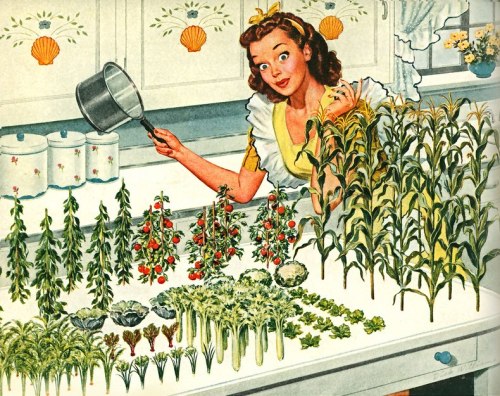


.jpg)
.jpg)
.jpg)
.jpg)
.jpg)



.jpg)
.jpg)
.jpg)
.jpg)
.jpg)

.jpg)
.jpg)
.jpg)
.jpg)
.jpg)
.jpg)
.jpg)




 Flower power … DJ Emma Peel’s favoured vintage era is 1968-71. “For me, dressing is like daily art, where you’re the blank canvas,” she says.
Flower power … DJ Emma Peel’s favoured vintage era is 1968-71. “For me, dressing is like daily art, where you’re the blank canvas,” she says.  All that jazz … author and 1920s vintage-clothing collector Inger Sheil, wearing a 1920s gold lamé coat and headdress and reproduction shoes. Photo: Natalie Boog
All that jazz … author and 1920s vintage-clothing collector Inger Sheil, wearing a 1920s gold lamé coat and headdress and reproduction shoes. Photo: Natalie Boog




